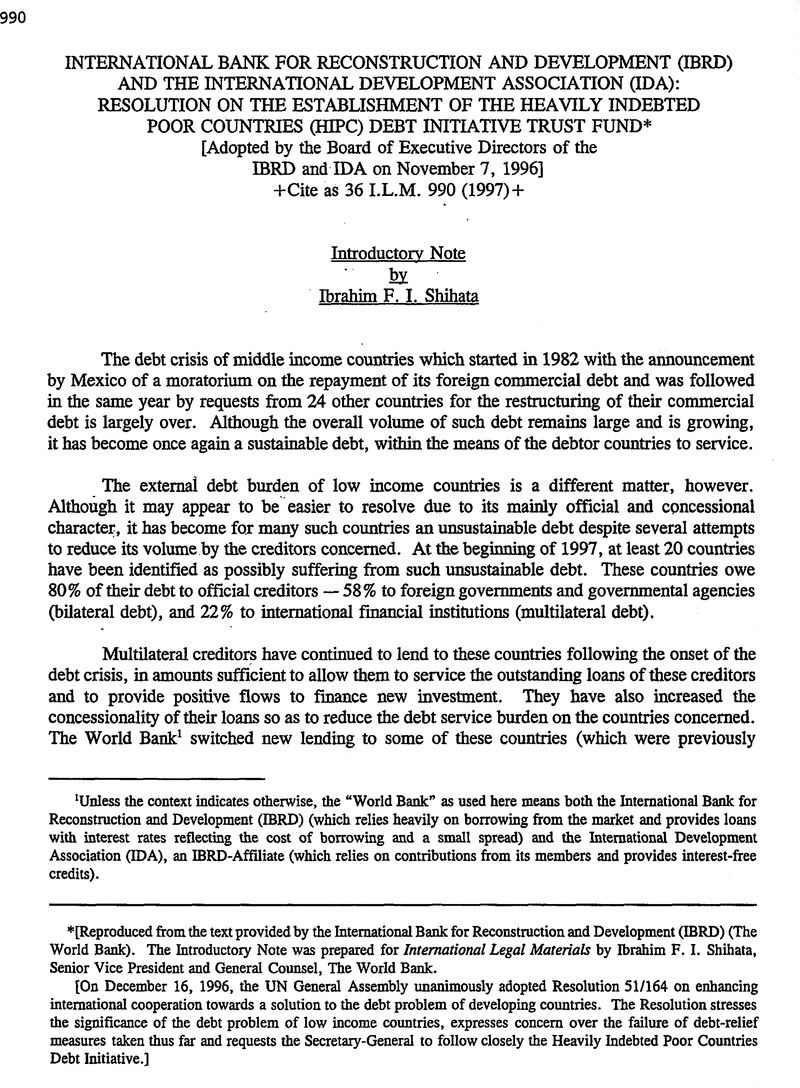No CrossRef data available.
Article contents
International Bank for Reconstruction and Development (IBRD) and the International Development Association (IDA): Resolution on the Establishment of the Heavily Indebted Poor Countries (HIPC) Debt Initiative Trust Fund
Published online by Cambridge University Press: 27 February 2017
Abstract

- Type
- Reports and Other Documents
- Information
- Copyright
- Copyright © American Society of International Law 1997
References
* Reproduced from the text provided by the International Bank for Reconstruction and Development (IBRD) (The World Bank). The Introductory Note was prepared for International Legal Materials by Ibrahim F. I. Shihata, Senior Vice President and General Counsel, The World Bank.
[On December 16, 1996, the UN General Assembly unanimously adopted Resolution 51/164 on enhancing international cooperation towards a solution to the debt problem of developing countries. The Resolution stresses the significance of the debt problem of low income countries, expresses concern over the failure of debt-relief measures taken thus far and requests the Secretary-General to follow closely the Heavily Indebted Poor Countries Debt Initiative.]
1 Unless the context indicates otherwise, the “World Bank” as used here means both the International Bank for Reconstruction and Development (IBRD) (which relies heavily on borrowing from the market and provides loans with interest rates reflecting the cost of borrowing and a small spread) and the International Development Association (IDA), an IBRD-Affiliate (which relies on contributions from its members and provides interest-free credits).
2 For a few countries that have relatively open economies and face a heavy fiscal burden of external debt, it was agreed in April 1997 that a target of present value of debt-to-exports below 200% may be established. In such cases, the target would be set so as to achieve a specified present value of debt-to-fiscal revenue target of 280%. In order to be considered for assistance on this basis, a country would need to have an exports-to-GDP ratio of 40 % and a revenue-to-GDP ratio of 20%.
3 A proposal has been made by some creditor countries to the effect that a portion of the IBRD contribution may also be used for relief of the debt owed to the African Development Bank. The first IBRD contribution of $500 million does not allow for this use, however.




